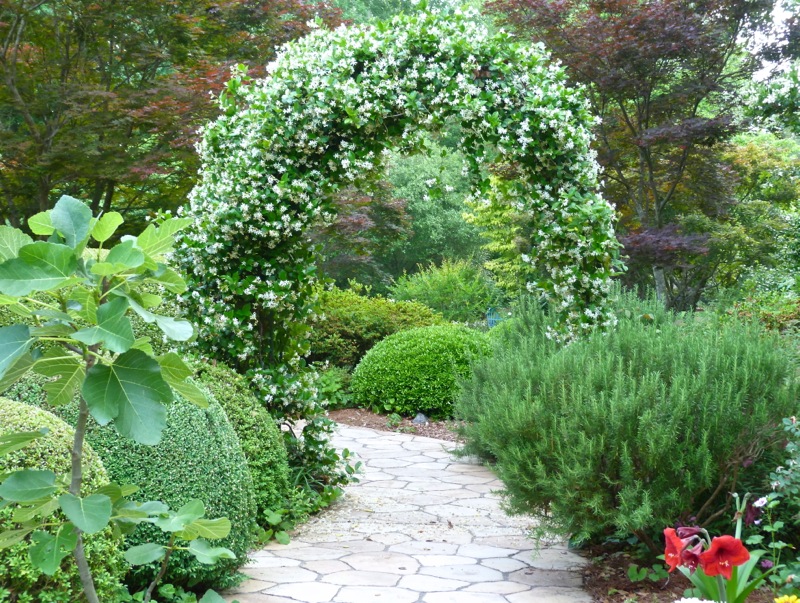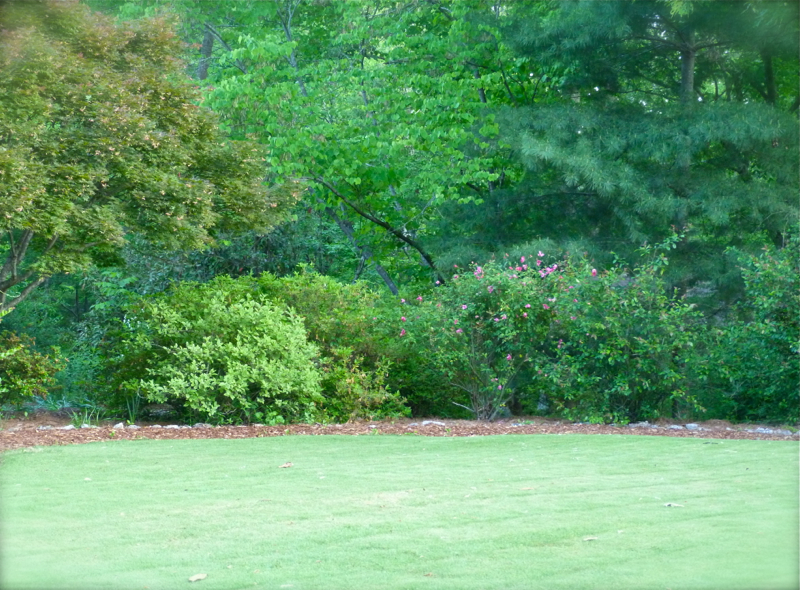Confederate Jasmine for a Fragrant Layer in the Garden
 Saturday, May 18, 2013 at 6:20PM
Saturday, May 18, 2013 at 6:20PM A beautiful garden is multidimensional, containing layers that cover the ground, mound and stretch, lean and weep, leap and reach heavenwards. This comes with age. A vine covered structure is an easy way to add dimension to a younger garden that still feels flat.
Trachelospermum jasminoides, also called Confederate jasmine as well as star jasmine, is a beautiful vine for the purpose. I have an old metal arch over the pathway that leads from the patio around the side of the house to the front. Over the years I have had several roses and a hyacinth bean growing on it. None have been as successful as the confederate jasmine I planted a couple years ago. A single plant has completely smothered the arch and hides its rickety, rusty imperfections.

This vine has lustrous, evergreen leaves, and in spring it produces myriads of highly fragrant white flowers. The flowers are less than an inch wide and are shaped like little pinwheels.  I am not surprised that high end perfume is made from the blossoms. Every year I look forward to the olfactory experience of walking under the blooming arch.
I am not surprised that high end perfume is made from the blossoms. Every year I look forward to the olfactory experience of walking under the blooming arch.
Trachelospermum jasminoides is a relatively easy care vine. It grows in hardiness zones 8-10 and can handle heat, wind, and the occasional drought. It will bloom in sun to shade and likes rich, well draining soil high in organic matter. While it likes moisture, especially during the hottest part of summer, it may develop fungus in soil that stays soggy. It usually doesn't need a lot of fertilizer but may benefit from an application of a balanced fertilizer once or twice a year.
This vine grows on the previous years's growth, so it should be pruned after it has finished flowering. It will reach 10 to 20 feet and grows best when planted on a structure such as a fence, pergola or arbor, though it can also make a satisfactory ground cover. Pruning is beneficial to control its size and spread, and cuttings may be used to propagate more vines. Those who live outside its hardiness zone can grow confederate jasmine in a pot. Inside it does best in bright filtered light.
 Permalink
Permalink  Confederate jasmine,
Confederate jasmine,  arch,
arch,  fragrant garden,
fragrant garden,  layered garden,
layered garden,  vines in
vines in  evergreens,
evergreens,  patio garden
patio garden 





